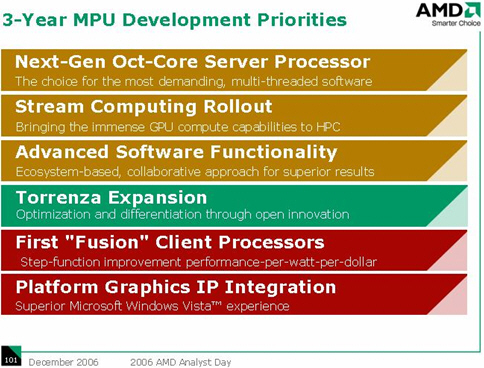AMD CTO: Core wars a mistake

AMD CTO Phil Hester said the semiconductor industry made a big mistake by entering megahertz wars at the expense of power management and how applications were actually used. And now the industry could be headed for a similar mistake by playing a game of "I have more cores than you do."
Hester, speaking at AMD's analyst meeting, said it's a battle the company doesn't have to fight. Instead, AMD's road map focuses on accelerated processing to trump Intel. If the idea gets mindshare, you'll have CPUs, GPUs for graphics and APUs.
In a nutshell, accelerated processors are AMD's way of bridging enterprise and consumer semiconductors and derive value out of the ATI acquisition. The general theory: Vista's adoption will make 3D graphics the norm across all markets. Another wrinkle: AMD won't produce one general purpose chip for everything. Instead, you'll have building blocks that can be combined and customized based on applications and how they are used.
"The industry made a mistake by getting into a megahertz war. The industry could also make the same mistake by getting into core wars," said Hester. "The accelerated processing choice is better suited to applications and how they are used every day."These accelerated processors are coming together under a "fusion vision" that should come together in 2009. Here's a look at AMD's processing priorities.

These chips are designed to accelerate computing at the systems and silicon level.
So why do we need a new chip category? Hester said new applications with digital media, high-definition and DRM will require a rethinking of current CPU designs. Meanwhile, the multi-core chip architecture will become inadequate by the end of the decade.
Below is what the accelerated processor components look like. Under AMD's scenario, accelerated processors will be building blocks that can be customized by market.
Add it up and AMD's processing lineup will contain a set of building blocks and intellectual property to mix and match processing capabilities depending on the end market.
How AMD's vision ultimately plays out remains to be seen, but the company has been ahead of the curve on the power management front. If AMD is on target it could keep Intel on its toes through the end of the decade.